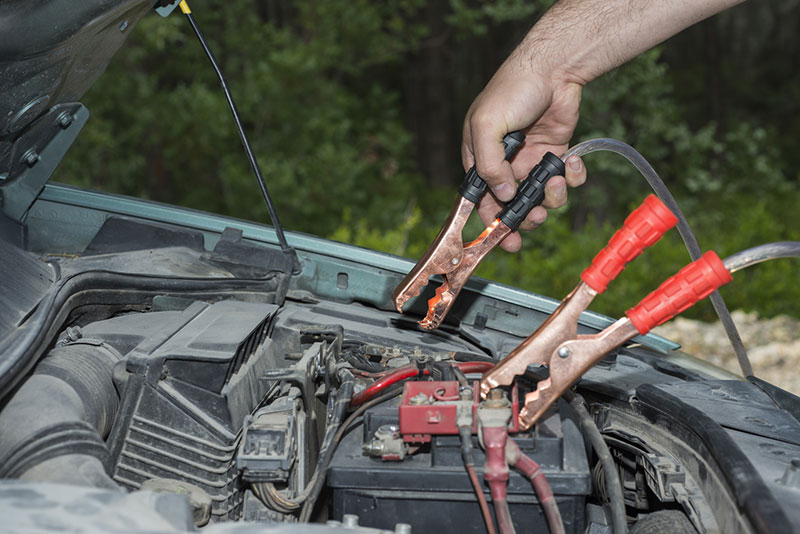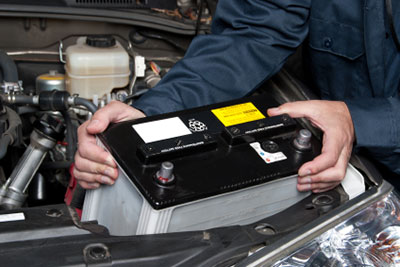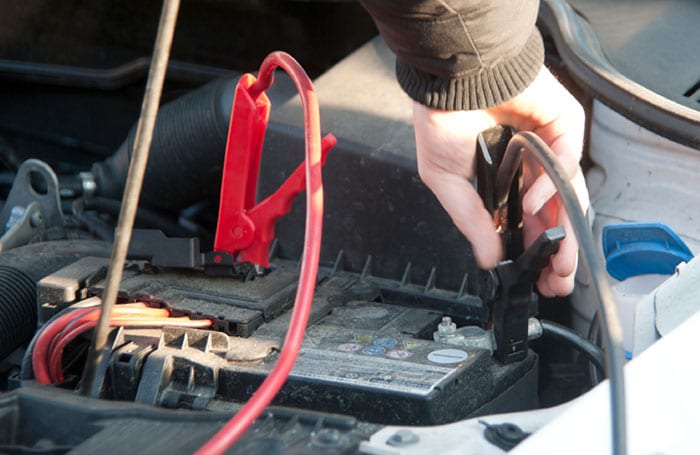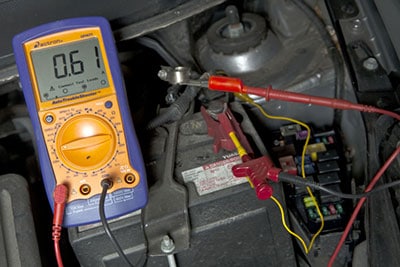There’s nothing worse than going out to your car, especially when you’re in a rush to get somewhere, and finding out that your car battery is dead.
Maybe your car battery is only a little lower than it should be and you’re still able to crank the starter and turn some lights on. Or maybe it’s dead entirely — and there’s nothing worse than that silence that descends when you turn the key.

Your Car Battery: Why It Dies and What You Can Do About It
But in the process they’ve also added lots of new time-saving devices to cars, all of which use energy that comes from your car battery, and all of which, if they malfunction can silently kill your battery without you even knowing it. You won’t even be aware anything’s wrong until you turn the key.
AAA is now dealing with 400,000 dead batteries a year — up from only 4,000 a decade ago.

Here are the most common causes of car battery failure, as well as some handy tips to make sure that you don’t get caught stranded too often.
Reasons a Car Battery Dies
Driver Error
This is the classic reason for a dead car battery.
Maybe you drove through a rainstorm and forgot to turn your lights off when you got home because it was the middle of the day. Or maybe you left your trunk slightly ajar when taking something out of it. Blasting the radio while the car’s in park is another good way to drain your battery.
These kinds of errors, however, can be easily rectified by simply recharging your battery, whether by doing it yourself or finding a good samaritan to jump start your battery by connecting it to his.
Once your car’s up and running, drive it around for a while just to make sure it charges fully, and you should be back in business.
An Aging Battery
This is a problem that also happens to everybody eventually, usually because we’ve completely forgotten that it’s time to replace the battery.
It’s easy to forget, especially now that batteries last longer and longer, but they do have dates stamped on them… and you should make some sort of mental or physical note to replace it before it expires.
4-5 years is a good standard if you don’t remember when you bought your current car battery.
The “Parasitic” Drain
This cause is the most annoying and hardest to fix of all car battery drain problems, and it’s here where we come into the realm of new technology causing new problems.
Any time you buy a stereo or car alarm that’s “aftermarket,” that is, not factory installed with the car at the time you bought it, you run the risk of a slow battery drain.
Your headlights, your radio, even something as simple as your glove box light or dashboard clock can eventually drain a battery if you’ve got an electrical problem that allows it to stay on long enough.
New car features such as heated seats and keyless entry can also malfunction and begin to drain the battery. The good news is there’s a diagnostic you can run (as we’ll see below).

Improper Charging
This is a problem that can indicate a far worse one inside your engine.
If you find your battery charge is lower than it should be all the time, or worse, your engine stops entirely while driving, usually this is a result of a faulty alternator. Either a bad belt, which needs to be replaced or at least tightened, or the automatic tensioner that keeps the belt taut may be malfunctioning.
The alternator itself may need to be rebuilt or replaced… although if your problem is that severe, you’ll also notice it in other areas of your engine.
Bad Connections
A battery is just a closed electrical circuit when you get right down to it — and when that circuit is broken, the battery is no good, at least temporarily.
Make sure the poles of your battery, both positive and negative, aren’t corroded and that the cables are attached good and tight. You’ll also want to make sure that your battery is snug inside its cradle. A battery that moves around could easily break the connection.
Seasonal Changes
Have you just noticed a major change in the weather? The first cold snap of winter, perhaps, or the first really warm day of spring?
These temperature changes can take an already overused battery and push it over the edge. Most of the time, if your battery dies outright at the same time there’s been a major seasonal change, it just means you need to get a new one.
How to Check and Prevent Car Battery Drainage
Use a Multimeter
It’s simply a device that attaches to your battery and lets you know how much current is leaving it at any given time; you can get one for about 20 bucks and attach it to the negative battery post.
If it reads over 25 milliamps, something is draining your battery somewhere. Open up your fuse box and remove fuses one by one until the multimeter drops below 25. Then you’ll be able to isolate the problem.

Test Your Battery
To make absolutely sure the problem’s not with the car battery itself, you can actually bring it to an auto repair shop, or even a parts store, and have them test the battery for you.
They can even put it on a slow charge overnight. If it holds that charge, the battery is not the problem. If it doesn’t, you may simply need to replace your battery.
Do the Maintenance
Inspect your battery every so often. If it’s an older one, make sure it’s filled with water.
If you do find corroded terminals, clean them with a wire brush and grease the post before you hook the battery back up.
Make sure the car is off and you’re wearing gloves and eye protection anytime you fool with a car battery! The acid inside is extremely corrosive.
Know the Signs
If your car doesn’t have a voltmeter or other indicator in the dashboard, they’re cheap to get and easy to install — and a great way to make sure you’re getting a full charge all the time.
Your vehicle should read just under 13 volts when you turn the key on, which should move up closer to 14 volts when you’re idling.
Be on the lookout for slow cranking or dim headlights. These are also signs of danger.
Get a Jump Starter

The really good quality jump starters will hold 500 to 1000 amps, which will protect you for the next 10 to 20 battery outages out there on the road.
They also charge smartphones, tablets, watches and whatever else you might have on you… they’re a very important piece of safety equipment for any driver.
Don’t Let a Dead Car Battery Ruin Your Day
You don’t have to take your car to a mechanic or even call a tow truck service every time you’re left stranded. With a little foresight and some inexpensive equipment, you can make sure your car battery is always ready to go, no matter what happens.
In today’s society, it doesn’t pay to be left alone on the side of the road with no other way to get home, or to have to take a day off from work to bring your car into the shop.
Don’t wait around until your battery dies again… you never know where that might happen! Check your battery out today, write down the date you got it, make sure it’s up to speed, get a jump starter, and rest easy knowing your freedom is still your own!










